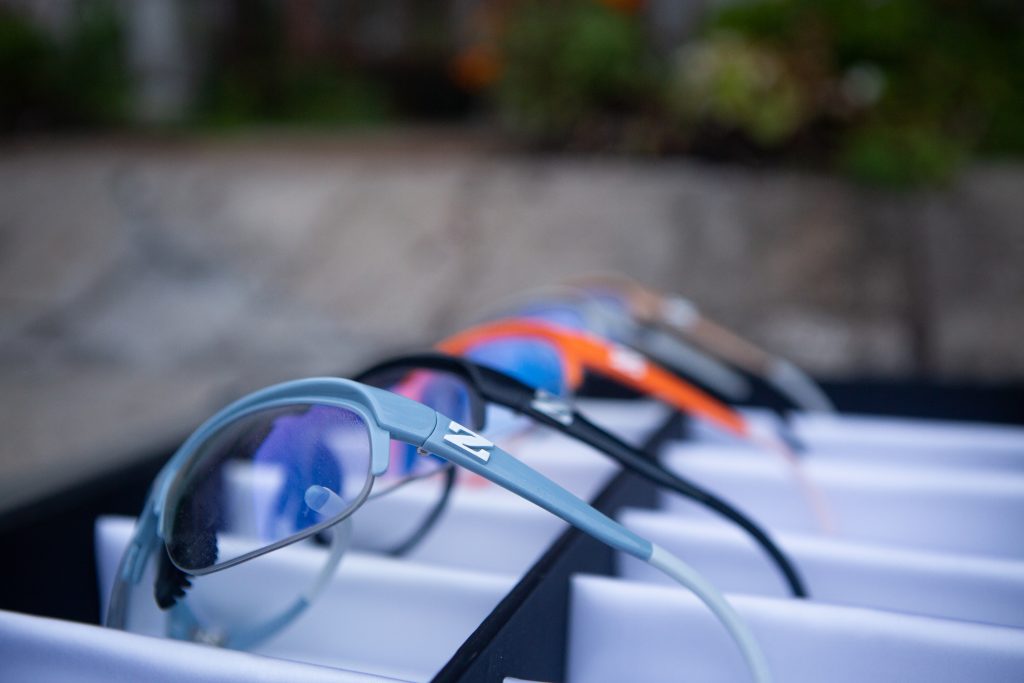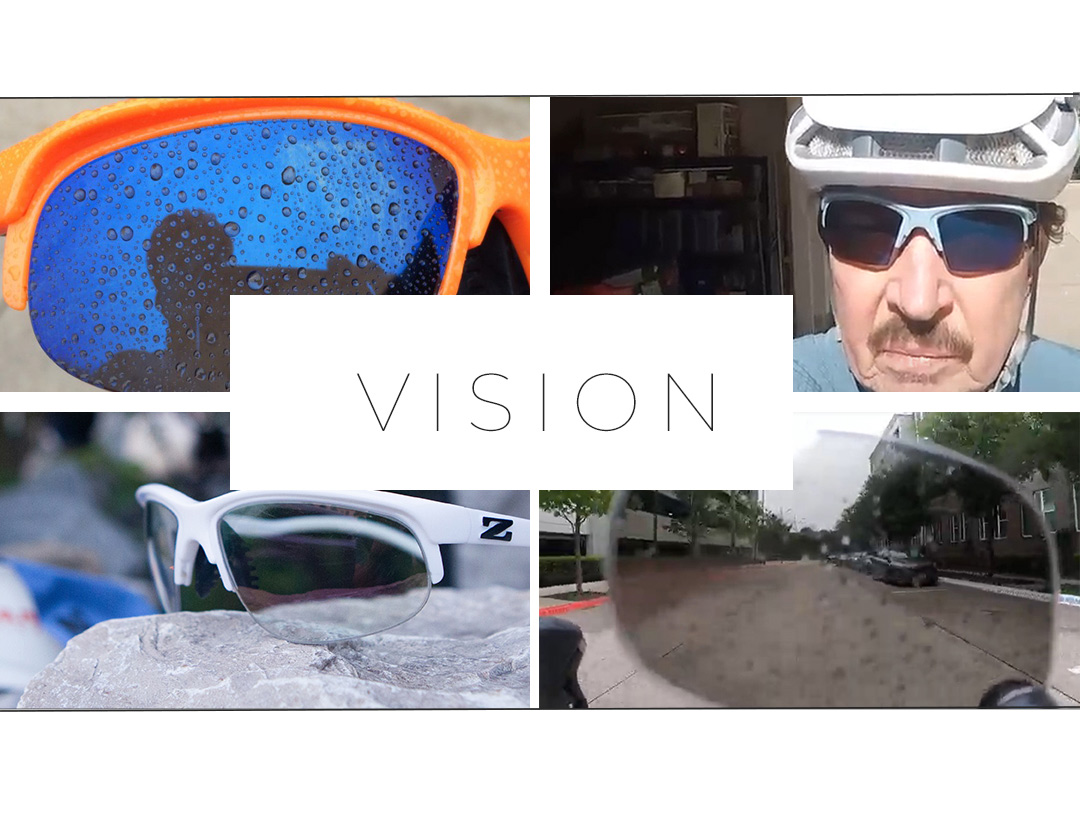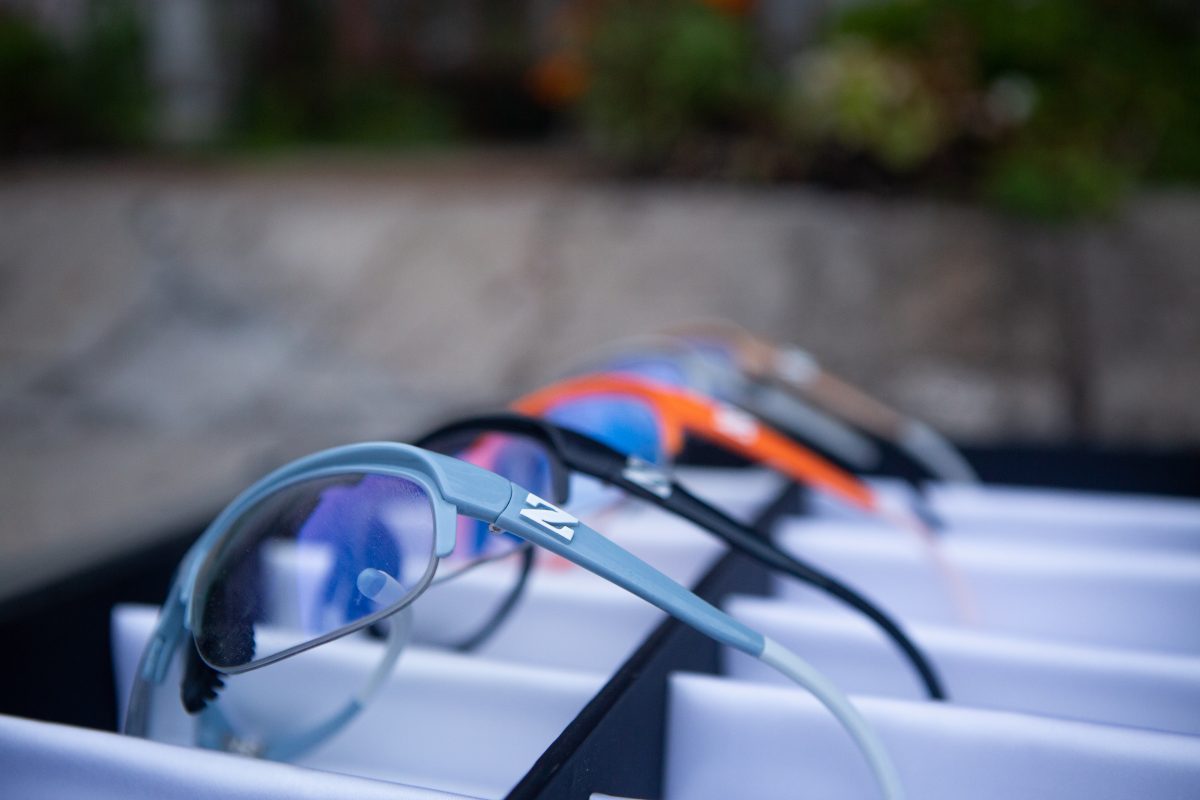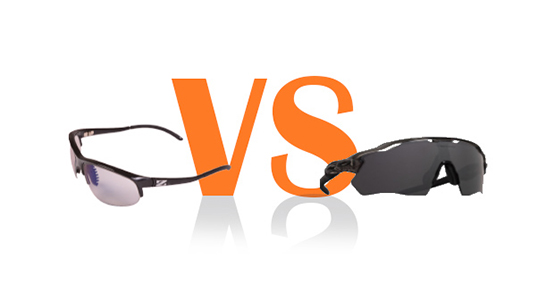During our dealer sales trainings, many of our dealers ask us the difference between lens coatings and tints.
What Are Lens Coatings?
Lens coatings are applied to eyeglass lenses to enhance the durability and performance of your glasses. Most commercially popular sport sunglasses in today’s market do not apply additional lens coatings–except of course Zoran Performance Sunglasses!
The reason for this is:
- The quality of the lens needs to be much higher than what is being produced for sports today.
- It is an expensive process requiring very expensive highly technical equipment.
- Expertise is needed to produce coated lenses. Lens preparation has some exceedingly high tolerances, and without proper preparation, they may explode.
- Production processes are much slower with limited capacity runs. These glasses cannot be mass produced.
What Lens Coatings are Used by Zoran Performance Eyewear?
Zoran uses a multi-layer proprietary coating process when producing one pair of Zoran glasses. These coatings have been created and tested to perform in the variable conditions that riders experience during a ride.
The coatings applied to Zoran Lenses both on the front and back are:
- Anti-Reflection Coatings
- Hard /Scratch Resistance Coating
- Hydrophobic Coatings – Anti-Fog/Anti-Moisture
- Oleophobic Coatings – Anti-Smudge
- UV Coatings
A Brief History of Lens Coating
The idea of coating lenses emerged almost by accident.
- The first use of coatings was anti-reflective coatings primarily for scientific optics requirements (telescopes, microscopes etc.) but eventually found its way into the ophthalmic applications.
- An anti-reflective or anti-reflection (AR) coating is a type of optical coating applied to the surface of lenses and other optical elements to reflect light away from the lens.
- Glass and other lens materials normally reflects a certain amount of light from its surface back to the atmosphere. If the light is being reflected it is not passing through the lens thereby reducing the available light.
Invention of Anti-Reflective Coatings
- In the late 1800s, Lord Rayleigh, a British Nobel prize winning physicist, first discovered the strange phenomenon of anti-reflection.
- He noticed that glass reacted with the environment and tarnished with time. So Rayleigh was finding a counter to this degradation of transparency. But to his surprise, he discovered that a slightly tarnished glass in fact allowed more light through than a brand new one.
- Interference based coatings were introduced by Carl Zeiss Optics in 1935. Applied to binoculars AR coatings remained a German military secret until the beginning of WW II.
Application Methods Followed
- In 1904, a chemical method of producing AR coatings was developed by British inventor/optical designer Harold Dennis Taylor.
- In 1936, the University of California, successfully made an artificial A/R coating applied in a vacuum with heat and evaporation of chemical elements.
- The basic process of applying A/R coatings in a vacuum with heat and evaporation of chemical elements continues today, but significant nanotechnology advances in the coatings have occurred.
Modern technology can deposit single layers of atoms / molecules at a time to the surface of a lens! This enable multiple single layers and allows for what is called “stacks.” Multiple coatings of different material can be stacked on top of one another to create the desired performance characteristics (see diagram below).








